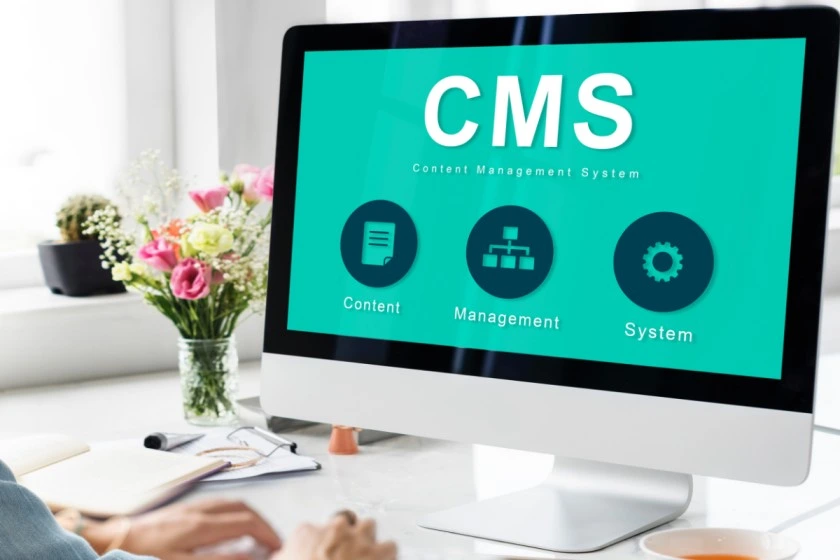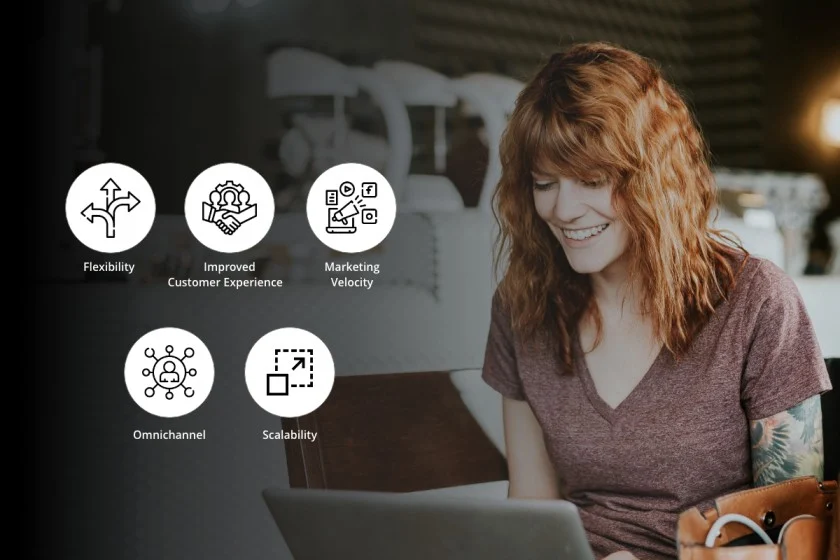96% of customers say customer service is the most crucial criterion for brand loyalty. Technology plays an important role to deliver a seamless and unparalleled customer experience. As a result, brands invest heavily in technology.
But it isn’t easy!
Challenges for Marketers to deliver seamless digital experiences
Customer demands for seamless customer experience are infinite. Across the channels, platforms, and devices, customers crave a consistent experience. The recent surge in consumer demand gave rise to the omnichannel experience. Today, customers may come across a product from one device and buy it from another. According to a study, 9 out of 10 consumers want an omnichannel experience with seamless service between communication methods.
The demands for media-rich content like visuals and videos have reserved their importance in the customer’s heart. But unfortunately, providing this experience has become a daunting task for modern marketers.
To meet the ever-increasing demand of the customers, modern marketers need technology that supports fast and efficient ways to meet the customer needs. Marketers need to react quickly to the market, and customers need to deliver an omnichannel experience. Unfortunately, the traditional CMS is inefficient in managing, organizing, and optimizing media-rich content.
The traditional technology is inefficient to help marketers deliver a good customer experience. Therefore, investments in modern technology which provide agility, speed, and efficiency are needed.
Headless technology is a strategy; businesses need to become future-proof and meet the rapid consumer demands.
But what is it exactly, and how will it make a marketer’s life easy?

What is a Headless Strategy?
Headless strategy decouples the customer-facing front end (the head) from the backend. Traditionally both the systems were tied in one monolith, making it easy to work. But as consumer demand increased, the limitations of these systems came into the picture. The marketing team’s urgent changes at the front end were impossible to accomplish without a developer. The development team’s involvement in every small change makes the task complex, inefficient, and time-consuming.
It takes around 1-3 months to make a few changes in landing page design in traditional CMS. But customers can’t wait this long.
Customers want to consume content across the channels. They don’t want to restrict themselves in content consumption platforms and formats. Traditional CMS can’t deliver content across devices like cell phones, laptops, smartwatches, audio devices, etc. Headless systems enable marketers with the agility to provide a seamless digital experience to customers.
Why You Should Move Toward Headless Loyalty Platforms

1. Flexibility
Traditional architecture comes with limited capability and complexity. Headless systems offer flexibility by eliminating the dependency on a single solution. Developers can use any language of their choice using the custom APIs and SDKs to build the customer interface. Integration with other systems is also possible with any language, boosting developers’ productivity.
Traditional CMS was designed to read content on web pages, but with advancements in consumer needs, different channels have existed. To deliver an unparalleled experience to customers, brands must provide content and marketing messages across channels. With the help of APIs integrated with headless CMS, content once created, can be shown to all the platforms. With no need to customize the content for each channel, it provides flexibility to the marketers.
2. Improved Customer Experience
Headless API enables marketing teams to deliver engaging content across the platforms effectively. It boosts customer engagement. The marketing team can now provide content and simultaneously establish communication across the channels.
Marketers can focus on delivering personalized content to the user. To offer an unparalleled experience, headless platforms have empowered marketers with real-time communications across channels.
3. Marketing Velocity
It’s crucial to time the market & stay ahead in the competitive landscape. Today, social media trends are changing the digital landscape and customer needs. Marketers need to adapt and respond quickly to the latest trends, and customers need to stay relevant. Headless systems offer fast and easy deployment of changes and iterations, making the overall marketing execution faster.
Traditional CMS involves the role of a development team to incur any changes in the content or the front end, this impacts the overall timelines. With the advent of headless systems, marketers can quickly incur the required changes and content enhancements.
4. Omnichannel
The key to marketing in the modern world across industries is personalization. To delight the customer at the different touchpoints is the top requirement of marketers. Customers may interact with your product or service on websites, social media, or mobile anywhere. But they expect the same interactions experience at all the touchpoints. That’s where the headless system comes into place.
The headless architecture delivers the perfect sales environment across all the channels. The data created across the channels is stored in a single platform. The headless CMS allows you to effectively deploy the content across the channels to meet customer requirements.
5. Scalability
The lack of limitations in the front-end capabilities enables greater control and scope for scaling.
Is your campaign witnessing a sudden rush on a particular channel using the API? Push the marketing campaigns, messages, and content over the platform. While the marketing team can work on the marketing messages, the tech team can focus on scaling the API to meet future demands.
Businesses are heading toward Headless systems to become future proof
Brands strive to meet customer needs, and technology plays a crucial role. As a result, headless commerce, headless CMS, and headless digital asset management have become important in the enterprise software industry.
Headless allows businesses to choose from the best in breed solutions specifically created to meet their customer’s needs. It makes changes to the site faster and simpler; to provide the digital experience customers are expecting. In addition, this is empowering the marketing team to make updates front-end without the complicated backend support.
It has given the flexibility to developers to choose from several available front-end solutions.


